How to Know You’re in Compliance When Handling Chemical Disposal
 Let’s play a quick game. It’s called “Where Can I Throw Away My Chemical Waste?” Sound like fun? Oh hush, you know it does. So let’s start! So where can you throw away your chemical waste? In the garbage you say? Sorry, that’s the incorrect answer! Down the drain? Wrong again! Throw it out into the street? Are you even trying at this? Okay, okay, we’ll stop messing with you, you probably got our point. Proper chemical disposal is not only an environmental issue, it’s a general safety issue as well. You definitely want to make sure you’re following proper protocol. How do you know you are? Read on and find out.
Let’s play a quick game. It’s called “Where Can I Throw Away My Chemical Waste?” Sound like fun? Oh hush, you know it does. So let’s start! So where can you throw away your chemical waste? In the garbage you say? Sorry, that’s the incorrect answer! Down the drain? Wrong again! Throw it out into the street? Are you even trying at this? Okay, okay, we’ll stop messing with you, you probably got our point. Proper chemical disposal is not only an environmental issue, it’s a general safety issue as well. You definitely want to make sure you’re following proper protocol. How do you know you are? Read on and find out.
KenBay is a company committed to proper disposal of waste, chemical or otherwise. We believe in a zero-waste initiative and encourage other companies to do the same!
Why is Chemical Disposal Important?
Now, we assume if you’re worked in the manufacturing industry for a few years that you understand why proper chemical disposal is critically important. If that’s the case, feel free to skip down to the next paragraph. For everyone else, here’s what you need to know. Improper chemical disposal can have devastating effects on both people and the environment. If you just throw it out with the regular waste, you put sanitation workers at risk. When you flush it down the drain, you send it to a water treatment facility that probably isn’t made to handle it. Finally, if you just throw it outside, you risk causing incredible damage to the local environment. We know you don’t want to do any of these things, so what’s the right way to handle it?
First, Avoid Unsafe Practices
The first thing you need to ensure is that you’re not already disposing of waste improperly, even incidentally. Check through your practices for your workplace, including any chemical labs if that’s necessary. If you uncover any improper chemical disposal in your investigation, shut down that practice immediately.
Second, Conduct Research
The most important thing you can do is keep yourself informed about proper chemical disposal. We wish that it were as easy as saying “put chemicals here!” but that obviously isn’t the case. Different chemicals may require different disposal methods. Not to mention the different federal and state regulations that you also need to comply with. Those, obviously, may change depending on your location. A great resource to turn to is the Environmental Protection Agency website. The EPA is a valuable resource when it comes to waste management of any kind. One of the benefits here is that they offer a comprehensive breakdown of the Resource Conservation and Recovery Act, which covers hazardous waste disposal. If you’re looking to learn more about hazardous waste, this is a great place to start.
Once you’re up to date on your info, it will be easier to implement the state and federal practices to dispose of your chemical waste properly. And for all your waste disposal needs, you can rely on KenBay to help you and keep you informed. KenBay offers a wide assortment of waste compactors, including the HazPac for Hazardous Waste. If you want to experience KenBay for yourself, you can try us before you buy us. See for yourself the difference a good waste compactor can make.
3 Amazing Reasons Why Using a Small Compactor is Genius
 Let’s face it: you know you’re a pretty smart person. You try to make informed and intelligent decisions, and you like to evaluate the options. We know when it comes to waste management, you want to make the best choice not only for the environment, but for your company as well. Is there a way to make great environmental choices without going over budget? Good news, there is! You can invest in a small compactor. Now, you may already think you’re good on compactors because you bought a large industrial one. You know what we’re talking about: one of those massive compactors that takes up an entire wall. The thing that took hundreds of people (give or take) to put in place.
Let’s face it: you know you’re a pretty smart person. You try to make informed and intelligent decisions, and you like to evaluate the options. We know when it comes to waste management, you want to make the best choice not only for the environment, but for your company as well. Is there a way to make great environmental choices without going over budget? Good news, there is! You can invest in a small compactor. Now, you may already think you’re good on compactors because you bought a large industrial one. You know what we’re talking about: one of those massive compactors that takes up an entire wall. The thing that took hundreds of people (give or take) to put in place.
Well, guess what: a small compactor may be a smarter choice. If you’re not convinced, then listen to some reasons why, courtesy of KenBay. We here at KenBay know a thing or two about great waste management. We’ve been helping our clients achieve zero waste and more efficient waste management for years with our RotoPac product. If you want to know more about KenBay and what we do, visit our website.
Small, but Powerful
Don’t be fooled by the name; there’s nothing “small” about the power of small compactors. Our RotoPacs have a continuously rotating arm that constantly crushes waste down to size. Trust us when we say that small compactors can handle anything you throw at them with ease. They can even crush hard plastic sacks into an easily disposed cube shape. Try it, you’ll be amazed!
Say Goodbye to Bulk
Remember those large compactors taking up an entire wall to themselves? Let’s make a comparison for a minute. If we were talking about computers, those large compactors would be the massive antiquated computers from the 1970s. You know what we mean: those gigantic machines that took up an entire room and were so expensive that only universities or research labs could afford them. In contrast, a small compactor is like a modern, sleek mini notebook: it can do everything you need it to . . . on the go! If given the choice, which kind of computer would you prefer?
An advantage of a small compactor is that it is way easier to move them around. This means that you can place those small compactors right at the source of your waste. This seems like a non-issue, but wait until you see the time that you save throwing your waste away. Just dump and move on, no problem!
A Small Compactor is Easy to Manage
Small compactors are generally cheaper than big compactors, but that’s not the only great thing about them. Their smaller size means they are generally easy to manage. If something goes wrong, small compactors are less likely to cause a major strain on your production schedule. Also, small compactors are easier to train your employees on. They’re not big and intimidating, and anyone can use them. Way easier to deal with!
For some of the best small compactors, look to KenBay’s RotoPacs. Our line of waste compactors have all these great benefits, and more. Because we’re a family business, we care about the quality of our product. When you invest in a KenBay RotoPac, you’re investing in a quality compactor to last for years to come. Best of all, we make it easy for you to try one out for yourself. All you need to do is sign up to Try It Before You Buy It. We’ll send you one of our RotoPacs to test out on site. If you like it, pay the difference to keep it! Show how smart you really are, and invest in a small compactor today!
How to Make Your 2017 Mantra: Reduce, Reuse, Recycle
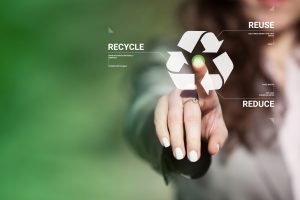 We are almost two months into 2017, and many people have given up on their New Year’s resolutions. Maybe you wanted to be more environmentally minded this year, but that mindset fell by the wayside in favor of other obligations. Is it too late for you to make the changes you wanted so badly last December? Not at all! We here at KenBay believe that the second best time to change your habits is today (the best time was yesterday). If you want to make 2017 your year of change, here’s a great mantra to live by: Reduce, Reuse, Recycle!
We are almost two months into 2017, and many people have given up on their New Year’s resolutions. Maybe you wanted to be more environmentally minded this year, but that mindset fell by the wayside in favor of other obligations. Is it too late for you to make the changes you wanted so badly last December? Not at all! We here at KenBay believe that the second best time to change your habits is today (the best time was yesterday). If you want to make 2017 your year of change, here’s a great mantra to live by: Reduce, Reuse, Recycle!
Reduce
If you want to make an environmental difference at your plant, reducing waste should be one of your first priorities. How do you know the amount of waste you’re generating? A great first step is to examine your material flow. Look at what’s coming into your plant, how it is used, and how it leaves. Once you’ve identified the source of your waste, then you can take steps to reduce it!
Reuse
One great way to help reduce your waste is to reuse it! This can look like a lot of different things. Perhaps you can find alternative uses for the giant plastic bags your products come in. Or perhaps you can repurpose scrap metal instead of leaving it around (which, by the way, is a big safety hazard!) And remember, reusing materials doesn’t have to mean physical materials like plastic and metal. Resources like water and energy can also be reused. You can conserve on multiple levels!
Recycle
The last step in our Reduce, Reuse, Recycle mantra is recycling. Interestingly, this is probably the first thing you thought of. And why not? Everyone knows about recycling. Improved environmental education has taught our children the benefits of recycling from a young age. But what is important to keep in mind is that before we can recycle, we must first reduce our waste and reuse what we can. How can we recycle? It’s actually easy — stop sending your waste into landfills! Landfills generate greenhouse gasses and can secrete chemicals into the earth.
Instead, send the waste you can’t reuse to a proper recycling facility. Additionally, look into whether waste-to-energy is a viable option. Waste-to-energy is an excellent alternative to traditional fossil fuels. You’ll reduce your waste and help our energy problem at the same time. It’s like an environmental double whammy!
Remember the mantra: Reduce, Reuse, Recycle. It’s not to late to make these changes for 2017. One thing that can help you reduce waste more effectively? Utilizing the right kind of compactor. A KenBay RotoPac is portable, which means it can be stored at the source of the waste. Say goodbye to enormous compactors that take up half the room! Because our RotoPacs have a constantly rotating arm, your waste is continually pressed and tightened into a convenient cube shape. Cubes are great for stacking and hauling over to the recycling facility! If you are interested in purchasing a KenBay RotoPac for yourself, you can try it before you buy it. If you enjoy the RotoPac, you can even pay to keep the one we send you. Change is possible this year, and KenBay can help.
2 Surprising Ways to Encourage Waste Reduction
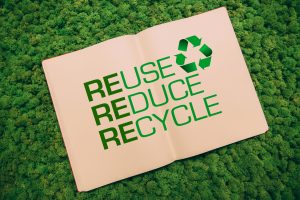 We here at KenBay are all about the environment. We promote a zero waste initiative and encourage waste reduction whenever we can. If you are one of those people who agree that you need to do your part for the environment, then hey, we salute you! You may want to help encourage others to do their part as well. But how can you make a difference? It seems that waste is just such an ingrained part of our culture. Many people throw their garbage in landfills without giving it a second thought! Well, if you want your manufacturing plant to promote waste reduction, here are some great ways to get the ball rolling.
We here at KenBay are all about the environment. We promote a zero waste initiative and encourage waste reduction whenever we can. If you are one of those people who agree that you need to do your part for the environment, then hey, we salute you! You may want to help encourage others to do their part as well. But how can you make a difference? It seems that waste is just such an ingrained part of our culture. Many people throw their garbage in landfills without giving it a second thought! Well, if you want your manufacturing plant to promote waste reduction, here are some great ways to get the ball rolling.
Become Involved in the Community
They say that one person has the capability to bring about change. With enough determination, this is definitely possible. However, why stop at one? We think a better way would be giving that one guy a break and getting the entire community involved. As a major business, you definitely have the power! Perform a bit of research and learn about the environmental needs of your community. Perhaps the local park suffers from a littering problem. Or maybe the community generates too much waste. What are the causes of these issues?
Once you understand the issues, work with local leadership to help correct them! Organize and fund park clean up day, for example, or set up recycling bins around high traffic areas to encourage recycling and waste reduction over landfill use. Also, think about setting up events that educate the public on what they can do at home and at work to help the environment. Also, consider donating to a non profit or charity that you think makes a difference. What takes one person a lot of effort to do by himself, an entire community can do easily! Not to mention it gets your company a lot of great press.
Become an Example for Others
Another great way to encourage waste reduction is to be an example of it yourself. This isn’t always easy, but with a little extra effort, you will find responsible waste management is definitely doable. Track your material flow and learn where your products come from . . . and where they go. Ensure that you are doing everything you can to recycle your materials, and look into options like waste to energy to see if it’s feasible for you. Finally, make sure that switching to an environmentally conscious mindset isn’t slamming your finances. Use a solid compactor and reduce your spending on the labor and hauling of your waste.
As it so happens, KenBay compactors are exactly the thing you need to promote fantastic waste reduction! Our compactors are small and portable, and you can use them right at the source of your waste. Simply toss it in and forget about it! Additionally, our RotoPacs continuously press and compress the waste into a cube shape, which is easier to haul and transport. You won’t have to waste money hauling empty space on the truck, and you’ll have fewer trips overall! If you are interested in experiencing a KenBay RotoPac for yourself, we offer you the option to Try it Before you Buy it! If you like what you have, just pay for the one we already sent you and be done with it. If you want to promote more waste reduction, trust KenBay to have your back!
How Environmentally Conscious are You with Handling of Waste?
One of KenBay’s mission statements is to operate with zer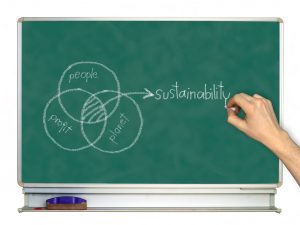 o waste and encourage others to follow suit. Zero Waste means that our company is committed to reusing and recycling our resources and will not send any waste into a landfill. We partner with other organizations who share the same philosophy — and there are many of us out there! We also work to educate others on the responsibilities of being an environmentally conscious company through efforts like this blog! So if you’ve ever wondered about how or why you need to consider the environment more in your processes, keep reading.
o waste and encourage others to follow suit. Zero Waste means that our company is committed to reusing and recycling our resources and will not send any waste into a landfill. We partner with other organizations who share the same philosophy — and there are many of us out there! We also work to educate others on the responsibilities of being an environmentally conscious company through efforts like this blog! So if you’ve ever wondered about how or why you need to consider the environment more in your processes, keep reading.
Zero Waste: The Positives
First, I want you to understand exactly what you have to gain by switching to environmentally conscious practices. Altering your wasteful processes reduces costs, attracts new environmentally conscious customers, and improves your organization’s sustainability. This article from the Queensland government website in Australia does a great job breaking down how these benefits come about. Also, if you think about it, you are unlikely to lose any customers specifically because of your environmentally conscious practices. So, with the opportunity to help the Earth and lots of great benefits for you, is there really a reason not to go green?
How to Get Started?
If you agree that sustainable practices are the right way to go, you may be confused about where to begin. Like other new practices, the internet is both your greatest tool and biggest frustration. In this digital age, you can find whatever information you need right in your own living room. An entire wealth of information is more easily accessible now than at any other time in human history. Fantastic! On the other hand, the internet is overly saturated with information everywhere you turn. Which is the correct way to go green? What are the most effective methods? How do you even get started? Ultimately, you need to thing of your company first and choose what is best for its needs. However, we can tell you that a great resource to turn to would be a company who is committed to an environmentally conscious philosophy. A company that has extensive experience putting that philosophy into practice.
Hey, wait a minute!
Tips from KenBay
Imagine that you are playing a board game and you begin with five points. You must keep all five points in order to be a fully environmentally conscious company. Obviously, points are subtracted for dumping waste in a landfall or a pond, but there are other more subtle ways to lose them as well. If you are trusting (without verifying) another company will sort your waste for recycling, you lose a point. If you aren’t recycling items because there is is product inside the plastic, you lose a point. If you steer away from super sacks because you don’t know how to deal with the empty sacks, you lose a point. You get the picture.
You keep points by keeping track of your product and all the items which make it up, from the minute they enter your factory to the moment they are recycled. One great way to help be environmentally conscious is to use compactors with KenBay. KenBay provides portable compactors that leave a small footprint at the site of your waste. You can compact your waste into small, easy to transport cubes to send off to the recycling center. If you want to experience the KenBay difference, you can try one of our compactors before you buy it. If you like the compactor we send you, you can just pay for it and keep it for good! You can be an environmentally conscious — and KenBay can help!
4 Ways Examining Your Material Flow can Improve Efficiency
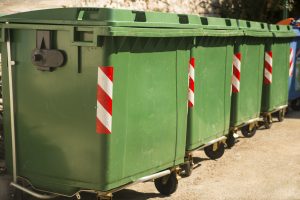 KenBay is a company committed to proper waste management and to reducing disposable waste whenever possible. We encourage other organizations to do the same. One great way you can work towards a goal of zero waste is through examining your Material Flow. A Material Flow is like a map that shows the journey that materials make from the time that the materials enter the manufacturing facility to where they eventually end up. Some view it as an “essential” component to handling waste properly. You have more control over not only what is coming out of your plant, but also what you might bring in. Overall, evaluating your material flow is a great way to waste less and mine the most value out of your materials. Here are 4 ways examining your Material Flow can improve your overall efficiency.
KenBay is a company committed to proper waste management and to reducing disposable waste whenever possible. We encourage other organizations to do the same. One great way you can work towards a goal of zero waste is through examining your Material Flow. A Material Flow is like a map that shows the journey that materials make from the time that the materials enter the manufacturing facility to where they eventually end up. Some view it as an “essential” component to handling waste properly. You have more control over not only what is coming out of your plant, but also what you might bring in. Overall, evaluating your material flow is a great way to waste less and mine the most value out of your materials. Here are 4 ways examining your Material Flow can improve your overall efficiency.
Ensure That No Material is Accidentally Wasted.
The biggest benefit of material flow is that you can see exactly what is happening to all the materials you are using. This will help reduce unnecessary waste for your plant. If you discover that certain materials are being unnecessarily discarded, you can implement steps to prevent that. Likewise, you can help keep the necessary materials going right where they need to go. In that same vein . . .
Discover New Ways to Incorporate Otherwise Discarded Materials.
What this means is that examining your material flow allows you the opportunity to get creative with your recycling. As they say, “necessity is the mother of invention”! If you discover that you have excess waste of a certain material, perhaps there is a way to incorporate it into your processes. If you are using the resources you already have instead of having to purchase more, that’s improving efficiency.
A Material Flow Helps You to Re-Examine Resource Requirements.
A big hurdle for healthy efficiency is energy expenditure. Wasted energy is an incredible burden both on labor and finances. Examining your material flow can assist you in determining where cuts in energy expenditure can be made. Does the cooling or heating system need to be operating during certain seasons? Could there be a switch to a more energy efficient source of power, such as LED bulbs? Water management too is a big bonus here. If you find you can cut back on water usage in certain areas, do it! Water is a natural resource that should rightly be preserved and conserved when you can.
Develop a Strategy, Get Everyone Onboard
A big step for efficient processing is making sure everyone on your team understands what the goal is. There is no point in trying to save time and money if nobody in your program understands what to do. Using Material Flow provides a graphic visual representation that is easier for some people to understand. For many, a visual representation of the data helps in learning and understanding it.
If you are committed to zero waste for your facility, KenBay is a great resource for improving your waste management. We offer portable, efficient compactors that can be used right at the source of the waste, saving your workers time and reducing potential hazards. If you would like to know more, visit KenBay’s website, where you can take advantage of our offer to try it before you buy it. And remember: whether it’s through the right compactors or through your Material Flow, stay on top of what you are putting out into the world.
3 Benefits to Incorporating Dewatering Into Your Waste Management

We here at KenBay believe in 100 percent zero waste when it comes to waste management. That includes how wastewater is handled. Dewatering is a process which removes liquid sludge from solid waste. This allows the water to be treated, recycled, and reused. (If you would like a more in-depth explanation about how dewatering works, this website has an excellent summary.)
Not everyone considers dewatering to be a viable option. Many factories and plants worry that the costs of labor, equipment, and maintenance outweigh any potential benefits of dewatering. Some simply do not consider the environmental impact. Many of these corporations choose instead to store their wastewater in holding ponds. Unfortunately, holding ponds are far from an ideal solution. Ultimately, there is a financial cost for dewatering, but the benefits are absolutely worth it. Dewatering helps the environment, the local area, and you!
Dewatering Less of an Impact on the Environment
Let’s start with the most basic benefit: your responsible handling of wastewater will be better for the environment. You will be helping to recycle one of our planet’s natural resources. You can actually use that recycled water for whatever you need to. Others can use it as well! You are not the only production facility that needs to use clean water. If others have access to it, then their productivity increases. Yours increases as well! And better productivity means a better local economy.
Dewatering Makes Your Waste Easier to Manage.
Extracting water means your waste weighs less. Less weight makes the waste easier to transport. Transport where, you ask? Many of you probably assumed a landfill. But KenBay is committed to finding new ways to utilizing waste without resorting to landfills. We prefer turning waste into clean energy. And guess what? Dewatering also makes your waste easier to incinerate.
Ultimately, You are Paying a Cost Anyway.
Too much water in soil can actually be a bad thing. When left for too long, still water can corrode the foundations of buildings. The threat of corrosion is worse the older a building is! If you find yourself in this situation, you will need to pay the cost of repairs. Additionally, as noted above, untreated sludge water will costs more to store and transport, because of its heavier weight.
Finally, if you are found responsible for any environmental hazard, you will ultimately have to pay to help fix it. Not to mention, the cost PR to fix your facility’s damaged reputation. Ultimately, if you are going to pay a cost, why not make the choice that is better for our planet and your local area? Who knows, your sterling environmentally friendly reputation may actually drum up more business than before!
We hope you see the advantages of switching over to dewatering. You may be paying for it now, but ultimately the benefits far outweigh any costs. You will provide a great service for your local community, the planet, and ultimately yourself. If you are interested in other ways you can help properly manage waste, check out KenBay’s website. We offer convenient on-site compactors that make managing waste easier. You can request a free 14 day trial offer!
It’s Time to Take Another Look at Your Waste Products
 When was the last time you conducted a waste audit for your business? 3 years ago? 5? Maybe, never? If that’s the case, it’s time to take another look at your waste products. Every business creates waste, that’s almost a certainty, but what is done with it, where it’s sent, and how much time, money, and resources are devoted to it can vary dramatically. All businesses handle waste management in different ways. But, the businesses that manage their waste most successfully all have one thing in common. They aren’t complacent, they aren’t stagnant, they don’t continue to do the same things they’ve done for years and years.
When was the last time you conducted a waste audit for your business? 3 years ago? 5? Maybe, never? If that’s the case, it’s time to take another look at your waste products. Every business creates waste, that’s almost a certainty, but what is done with it, where it’s sent, and how much time, money, and resources are devoted to it can vary dramatically. All businesses handle waste management in different ways. But, the businesses that manage their waste most successfully all have one thing in common. They aren’t complacent, they aren’t stagnant, they don’t continue to do the same things they’ve done for years and years.
Rather, they examine their waste products and processes with regularity. They also take a strategic approach to waste management. They examine and decide in advance how waste products will be handled, before their waste lands in a landfill!
Luckily, you can do the same for your business. If you haven’t ever evaluated your waste management processes, now is the time! Here are a few things you should consider:
Reduce, Reuse, Recycle
It may seem simple, but many businesses often forget that they can ease the burden of waste management by simply reducing the amount of waste their business creates. There are plenty of ways to reduce waste products in businesses that you should consider.
Can you recycle some of your waste? Or, can you donate excess material instead of throwing it away? Can you purchase materials in bulk to reduce packaging waste? Is it more cost effective to send your waste to a Waste to Energy plant than a landfill? We all know that reducing, reusing, and recycling are great ways to help the environment. But, in businesses, these steps can also save valuable time, resources, and ultimately money.
Evaluate Your Sources of Waste Repeatedly
If you create an effective waste management strategy, your business won’t just reduce costs associated with waste management. If fact, you might even transform manufacturing waste into profits. However, to do so, you first need to create an effective waste management plan. Then, you need to evaluate it, along with you sources of waste, repeatedly. At the start of every quarter, set aside time to take a look at the waste products in your business. Then, look for new ways to improve your waste management strategies.
Manage Your Waste Products with KenBay
We know that waste management can be a burden. But, with KenBay, you’ll have the tools you need to help make the job a little easier. The next time you evaluate your waste products and waste management strategy, consider integrating one of our industrial trash compactors into your processes.
Trash compactors like KenBay’s RotoPac are ideal waste management products for industrial settings. They allow companies to reduce the volume of their trash at a ratio of six to one. The RotoPac can handle all kinds of waste from food to recyclables, and even solid hazardous waste. Because trash compactors will reduce the weight and size of your waste, they are a great way to cut down your waste removal costs and improve the efficiency of waste management.
Don’t let something like a waste get in the way of your business operations. If you’re interested in trash compactors or finding a committed consultant to help you reduce your waste, call KenBay. We can tell you more about our services, no matter what industry you’re in, or how much waste you are creating!
Photo credit: Getty Images / humbak
5 of the Best Ways Waste is Converted into Renewable Energy
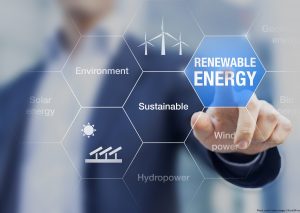 Using renewable energy is a hot topic in the waste management industry, but it’s one that many people know less about than they think. Sure, we all recognize the most common renewable energy sources, like solar power and wind energy. But, there are many other types of renewable energy that aren’t quite as common knowledge. Did you know that sewage waste is now being used to heat and cool buildings? Or, that wasted food is used to generate electricity? Our waste has increasingly become a valuable way to replace non-renewable energy sources. Here are a few surprising examples:
Using renewable energy is a hot topic in the waste management industry, but it’s one that many people know less about than they think. Sure, we all recognize the most common renewable energy sources, like solar power and wind energy. But, there are many other types of renewable energy that aren’t quite as common knowledge. Did you know that sewage waste is now being used to heat and cool buildings? Or, that wasted food is used to generate electricity? Our waste has increasingly become a valuable way to replace non-renewable energy sources. Here are a few surprising examples:
1. Biomass
Biomass, organic materials like scrap lumber, forest debris, crops, and manure, can be used as fuel to create electricity or other forms of power. This type of waste, which generally comes from demolition, construction, or farming practices, can be burned to create heat. In biomass power plants, this heat is harnessed and used to heat industries and homes, or it is used to produce steam. The steam from burning biomass fuel is used to run turbines to make electricity.
2. Sewage
There is a near constant stream of warm sewage that comes from the biomatter, dishwashers, showers, and industrial processes that produce hot water and send it down the drain. Researchers in China have found ways to capture this heat and use it to regulate temperature inside buildings. In Philadelphia, this technology has been installed at the Southeast Wastewater Treatment Plant. Using only sewage and wastewater, a 20,000 square foot compressor building at the plant is fully heated and cooled by the system.
3. Landfill Gas
The life cycle of your garbage doesn’t end when it’s dumped at the landfill. Instead, once there, the decomposition of solid waste begins to produce a byproduct that can be used in surprising ways. Methane gas, a by-product of garbage decomposition, is collected at landfills and used as thermal energy, to generate electricity, or to do both at the same time. Landfill gas is also being used as an alternative to fossil fuels like natural gas.
4. Waste Heat
Major data centers, like IBM’s Zurich Research Laboratory, use water to cool down its servers. Once the water has done its job, these centers are left with hot water that is often treated as waste heat. Now, instead of disposing of this waste, it is being used to heat nearby homes. Much like hot sewage is used to warm buildings, other forms of waste heat, like that produced when cooling machinery, can be used to generate alternative heating and cooling systems.
5. Food Waste
Heartland Biogas Project in northern Colorado is just one example of an organization that is finding ways to use food waste to create energy. They, like many others, collect millions of gallons of food waste and combine it with anaerobic digesters. These digesters are bacteria that break down the waste. In the process, they give off methane. This methane is a powerful gas used to generate electricity and other forms of renewable energy.
How KenBay Can Help You Manage Your Waste
Whether or not your business produces waste that can be used as a renewable energy source, we know waste management can be a burden. Because trash compactors will reduce the weight and size of your waste, they are a great way to cut down your waste removal costs and improve the efficiency of waste management.
Trash compactors like KenBay’s RotoPac are ideal for industrial settings, and allow companies to reduce the volume of their trash at a ratio of six to one. The RotoPac can handle all kinds of waste from food to recyclables, and even solid hazardous waste.
Don’t let something like a waste get in the way of your business operations. If you’re interested in trash compactors or finding a committed consultant to help you reduce your waste, call KenBay. We can tell you more about our services, no matter what industry you’re in, or how much waste you are creating!
Photo credit: Getty Images / NicoElNino


